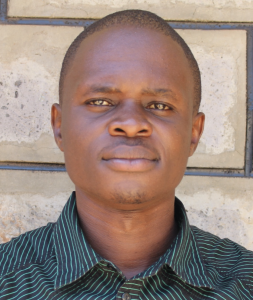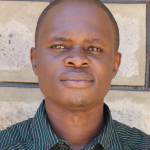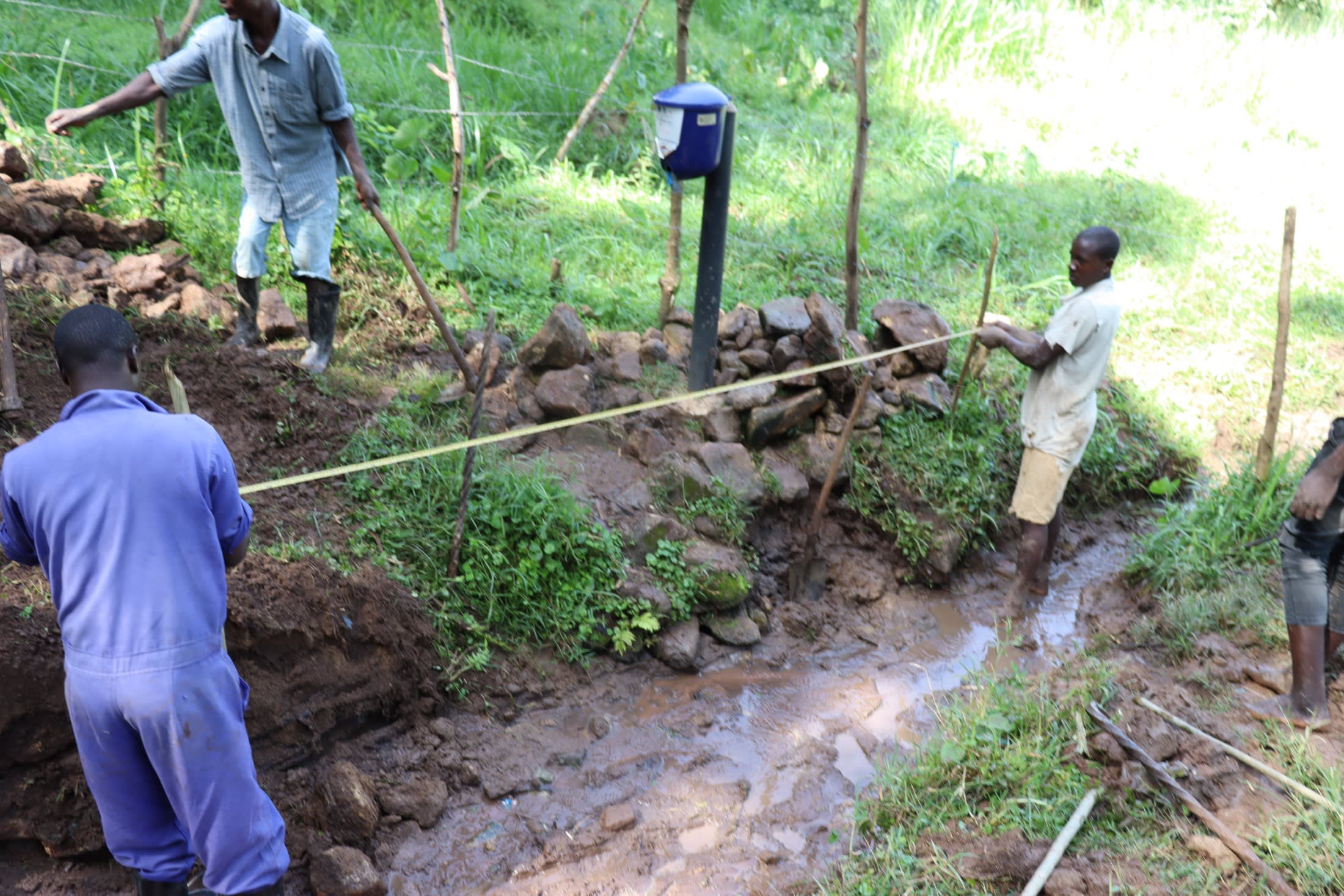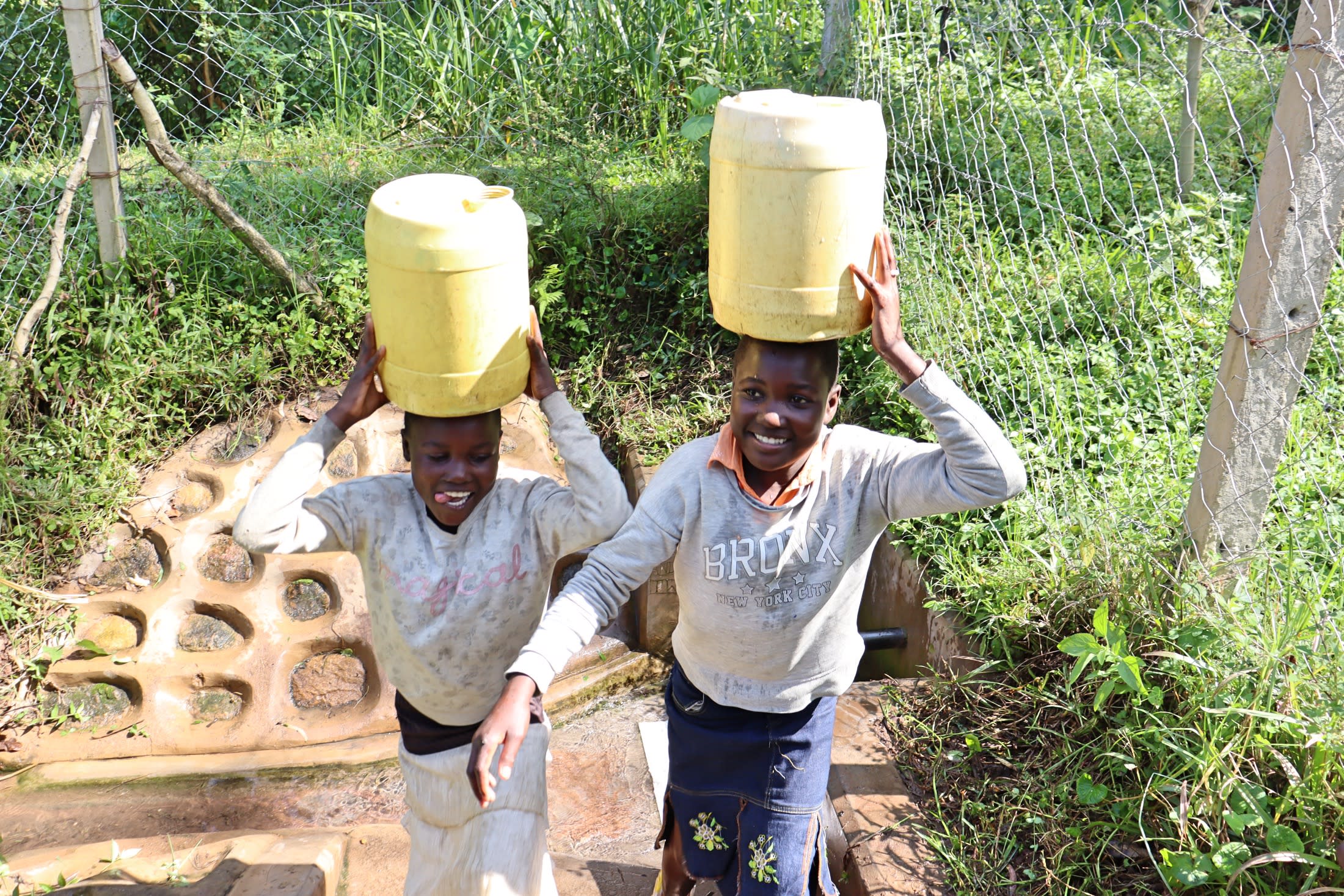September, 2022: Chevoso Community Spring Protection Complete!
Chevoso Community now has access to clean water! We transformed Yasuna Mwanza Spring into a flowing source of naturally filtered water thanks to your donation. Our team also trained the community on improved sanitation and hygiene practices. Together, these components will unlock the opportunity for community members to live better, healthier lives.
"The protected water point will impact my life very positively," said 38-year-old teacher Agatha Temba. "I have been struggling in getting clean water easily for my family. At times, it makes me get to school late due to time wastage due to inaccessibility. Right now, I am a happy human, for I have said bye-bye to lateness in school and also to waterborne diseases like typhoid, which was a thorn in my family."

Agatha, on the far left, celebrates with other community members.
"The plans that this water point will help me to achieve is getting to school early and [having] more time with the children," Agatha continued. "I used to feel bad when I got to school and [found] the ECD (Early Childhood Development) pupils waiting for me at the door. With this waterpoint, my house chores will not delay [me] in the morning, and thus [I will] have enough time to prepare."
Children were just as excited as adults about the new waterpoint.
"This water point has come [at] the right time," said 18-year-old Brigitte K. "My life will be impacted positively, for I have received a great solution to my problem. There will be no more waterborne diseases to be experienced. My time in school was minimal, for often I would visit the hospital for treatment over typhoid. Now that I can access clean and safe water, I can attest that God does remember His people, our community being one."

Brigitte enjoys water from the new spring.
"With the clean and safe water that we have received, I will no longer frequent the hospital as I used to," Brigitte said. "The cash that was used for treatment will be converted to do more development work like paying for my [transportation] to school. I will also have enough time in school to study and ensure I get the best grades."
Preparing for Spring Protection
Community members worked together to source and carry all locally available construction materials to the spring. These included bricks, sand, stones, and fencing poles. Some people also chiseled away at large rocks to break them down into gravel. Because people have to carry most items by hand, the material-collection process can take anywhere from a few weeks to months.
When the community was ready, we sent a lorry to deliver the remaining construction materials, including cement, plastic tarps, and hardware. Then, our construction artisan and field officers deployed to the spring to begin work. Individual households provided meals throughout each day to sustain the work team.
From Open Source to Protected Spring: A Step-by-Step Process
First, we cleared and excavated the spring area. Next, we dug a drainage channel below the spring and several runoff diversion channels above and around the spring. These help to divert surface contaminants away.

To ensure community members could still access water throughout the construction process, we also dug temporary channels from the spring's eye around the construction site. This allowed water to flow without disrupting community members' tasks or the construction work. Excavation created space for setting the spring's foundation, made of thick plastic tarp, wire mesh, concrete, and waterproof cement.

After establishing the base, we started brickwork to build the headwall, wing walls, and stairs. Once the walls had grown tall enough, we began one of the most crucial steps: setting the discharge pipe. The discharge pipe needs to be positioned low enough in the headwall so the water level never rises above the spring's eye, yet high enough to allow room for the average jerrycan (a 20-liter container) to sit beneath the pipe without making contact.

If we place the discharge pipe too high above the spring's eye, backpressure could force water to emerge elsewhere. Too low, and community members would not be able to access the water easily. We embedded the pipe using clay (or mortar when clay is in short supply) and placed it at an incline to ensure water flows in the right direction.
In coordination with brickwork, we pitched stones on both sides of the spring's drainage channel. We then cemented and plastered each stone, forming the rub walls. These walls discourage people and animals from standing in that area, which could cause soil erosion and a clogged drainage area.

We then cemented and plastered both sides of the headwall and wing walls. These finishing layers reinforce the brickwork and prevent water in the reservoir from seeping through the walls. In turn, enough pressure builds in the reservoir box to push water out through the discharge pipe.
As the headwall and wing walls cured, we cemented and plastered the stairs and installed four tiles beneath the discharge pipe. The tiles protect the concrete from the falling water's erosive force while beautifying the spring and facilitating easy cleaning of the spring floor.

The final stage of construction is backfilling the reservoir box behind the discharge pipe. We cleared the collection box of any debris that may have fallen during construction. Then we redirected the temporary diversion channels back into the reservoir box, channeling water into this area for the first time. We closed off all of the other exits to start forcing water through the discharge pipe only.
We filled up the reservoir area with the large, clean stones community members had gathered, arranging them in layers like a well-fitting puzzle. We covered the rocks with a thick plastic tarp to minimize potential contamination sources, then piled enough dirt on top to compensate for future settling.

Community members were instrumental in the construction process.
Community members transplanted grass onto the backfilled soil to help prevent erosion. Finally, the collection area was fenced to discourage any person or animal from walking on it. Compaction can lead to disturbances in the backfill layers and potentially compromise water quality.
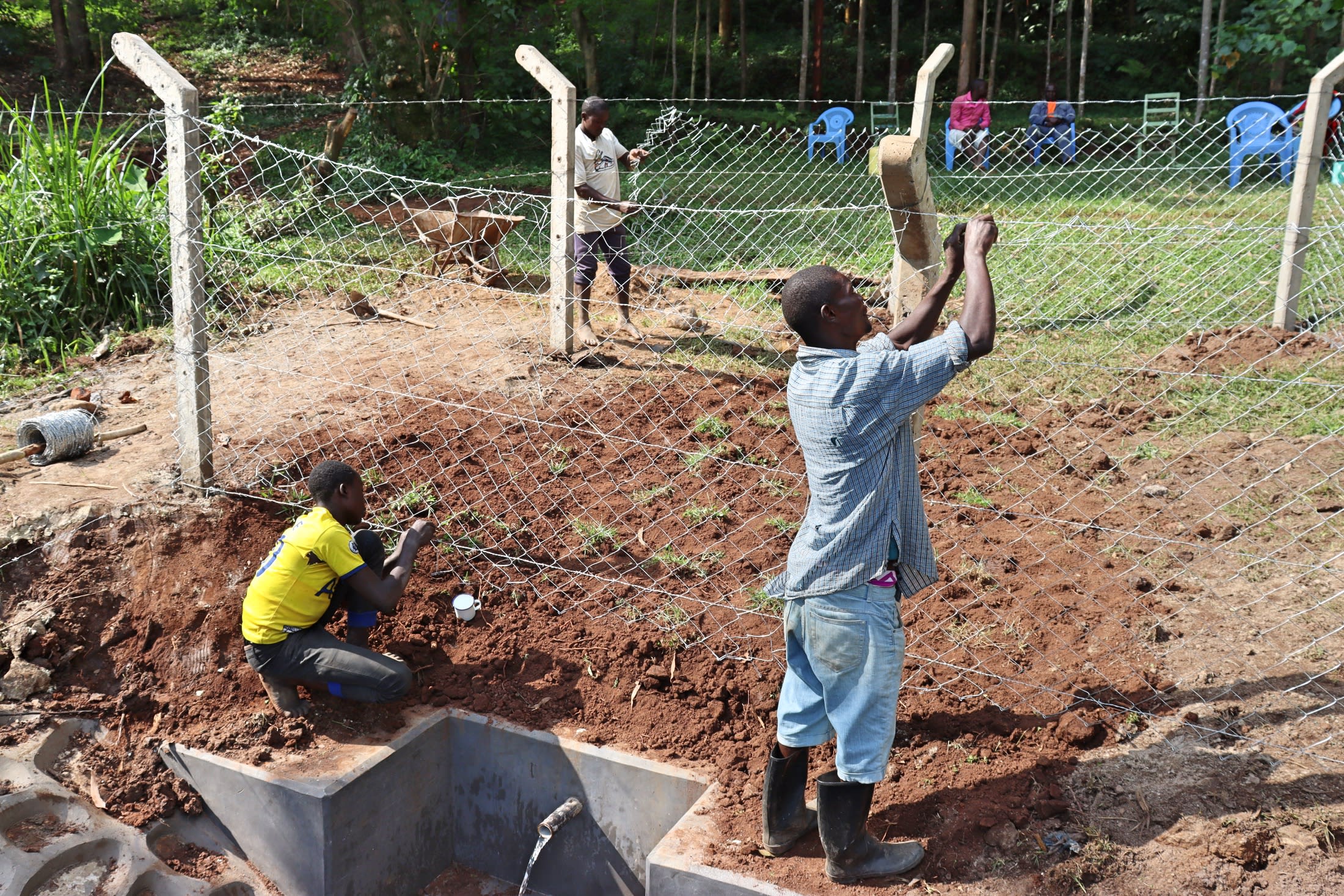
The entire construction process took about two weeks of work and patience to allow the cement and plaster to finish curing. As soon as the spring was ready, people got the okay from their local field officers to fetch water.
We officially handed over the spring to mark the community's ownership of the water point. Happiness, thanksgiving, and appreciation were the order of the day, flowing in all directions.
The day the spring was successfully completed, everybody was happy and wanted to have a taste of water after protection. The chairman of the water point committee appreciated all the community members for being cooperative and willingly supporting the project. He further thanked everyone involved in the project for remembering them and ensuring that they have clean and safe clean water. He finally finished with prayers asking God to bless every individual who made it possible.
Training on Health, Hygiene, and More
Together with the community, we found their preferred date for training while considering other community calendar events, such as the agricultural season and social events. We requested a representative group of community members to attend training and relay the information learned to the rest of their family and friends.
When the day arrived, facilitators Jemmimah, Victor, and Nelly deployed to the site to lead the event. 14 people attended the training, including 13 women and one man. We held the training near the spring, which is centrally located for everyone. Unfortunately, not as many people attended as we had hoped, but those who were present promised to relay the message of hygiene and sanitation to the rest of the community.

Handing out notebooks.
We covered several topics, including community participation in the project, leadership and governance, personal and environmental hygiene, water handling and treatment, spring maintenance, dental hygiene, the ten steps of handwashing, disease prevention, and how to make and use handwashing stations.
During the leadership and governance session, we held an election for the newly formed water user committee leaders, who will oversee the maintenance of the spring. We also brainstormed income-generating activities. Community members can now start a group savings account for any future minor repairs to the spring and a cooperative lending group, enabling them to develop small businesses.
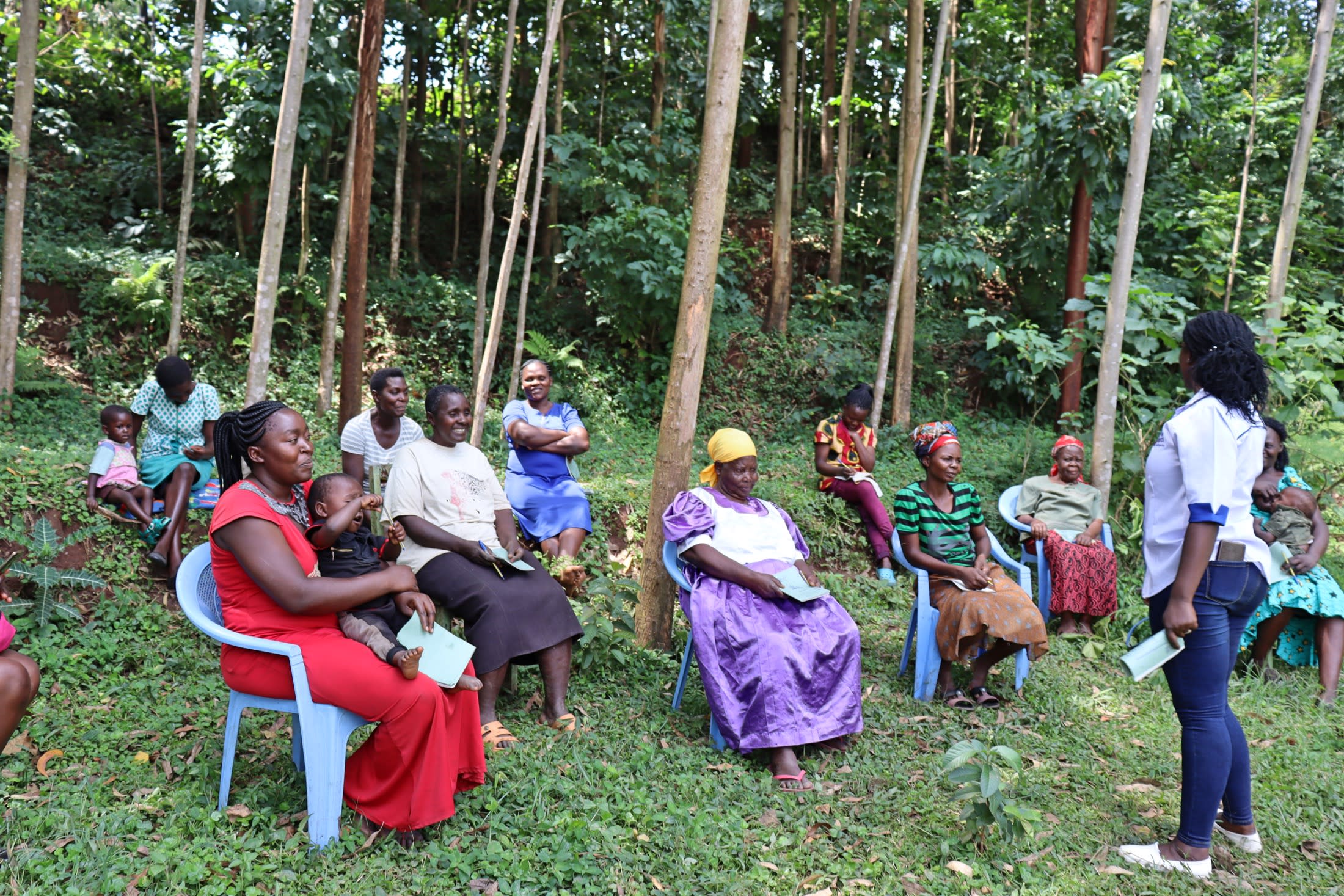
Participants listen to the field officer.
One of the more memorable topics was dental hygiene. Because of the high cost of living in recent months, most of the community members in Chevoso have begun using sticks from the toothbrush tree as toothbrushes and salt as toothpaste. One participant said that toothbrushes and toothpaste are less important than having food on the table.

Brigitte and field officer Jemmimah demonstrate toothbrushing.
The facilitator then encouraged them not to lose hope and reminded them that they should not forget to take care of themselves. She further warned them that neglecting hygiene practices may cause more harm to finances if they become sick. We also believe that access to clean water will help with this, given the reduced medicinal costs in the future due to fewer water-related illnesses.

Participants also loved our demonstration on soap-making. They appreciated the skill and knowledge they received. They will use their new soap-making skills as an income-generating activity, so it will be easy for them to pool their resources to buy chemicals to make their own soap.
"The training was very valuable," said Agatha, who we quoted earlier. "The most interesting part of it was that we were reminded of the key things which affect our lives on a daily basis. [On the] example of dental hygiene practices, I used to assume things were affecting me, but from the training, [I] am in a better place of ensuring that my family members are well-kept."
Conclusion
This project required a substantial collaboration between our staff, our in-country teams, and the community members themselves. When an issue arises concerning the spring, the water user committee is equipped with the necessary skills to rectify the problem and ensure the water point works appropriately. However, if the issue is beyond their capabilities, they can contact their local field officers to assist them.
Also, we will continue to offer them unmatchable support as a part of our monitoring and maintenance program. We walk with each community, problem-solving together when they face challenges with functionality, seasonality, or water quality. Together, all these components help us strive for enduring access to reliable, clean, and safe water for this community.
With your contribution, one more piece has been added to a large puzzle of water projects. In our target areas, we’re working toward complete coverage of reliable, maintained water sources within a 30-minute round trip for each community, household, school, and health center. With this in mind, search through our upcoming projects to see which community you can help next!
Thank you for making all of this possible!

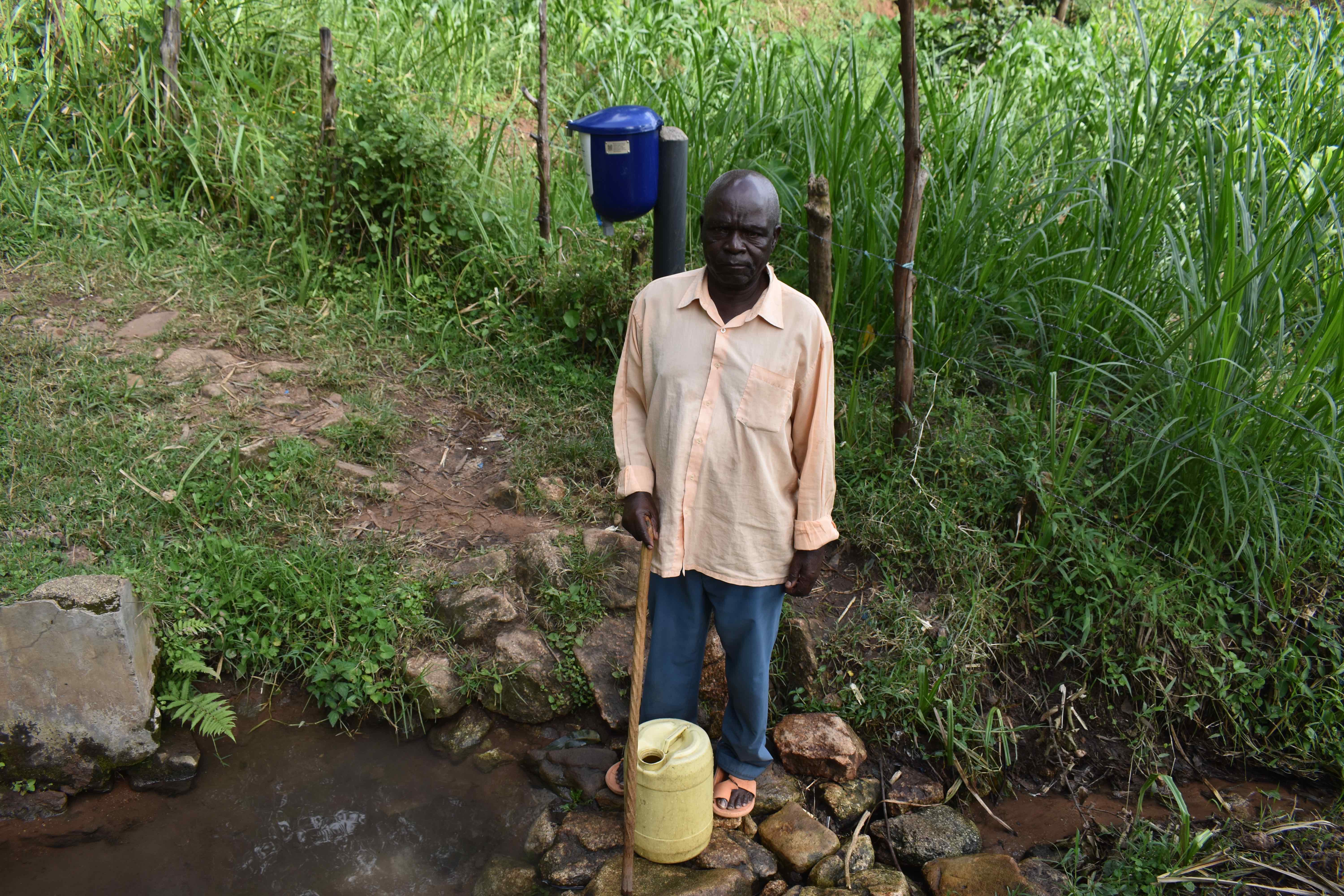


 Protected Spring
Protected Spring
 Rehabilitation Project
Rehabilitation Project










